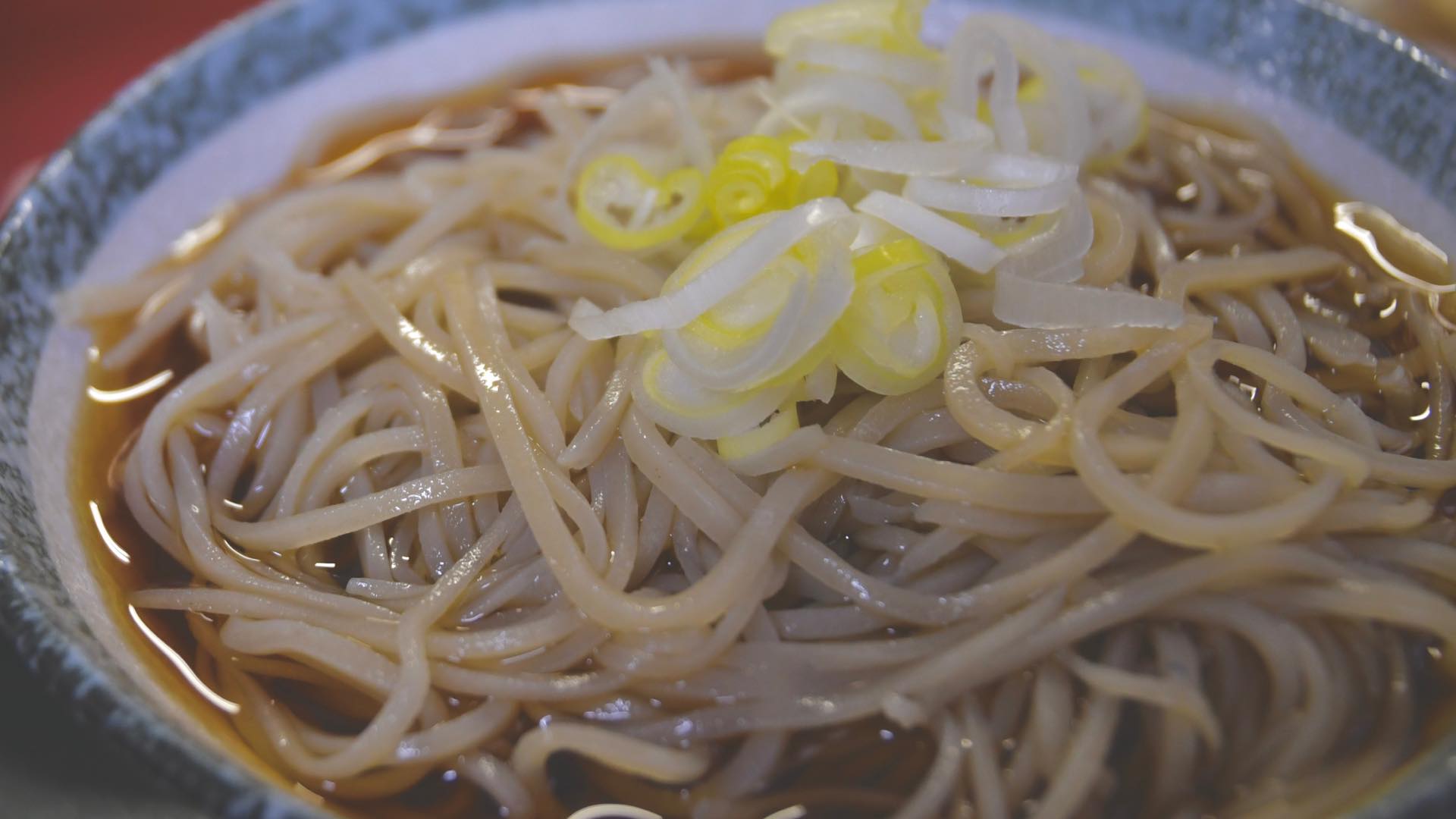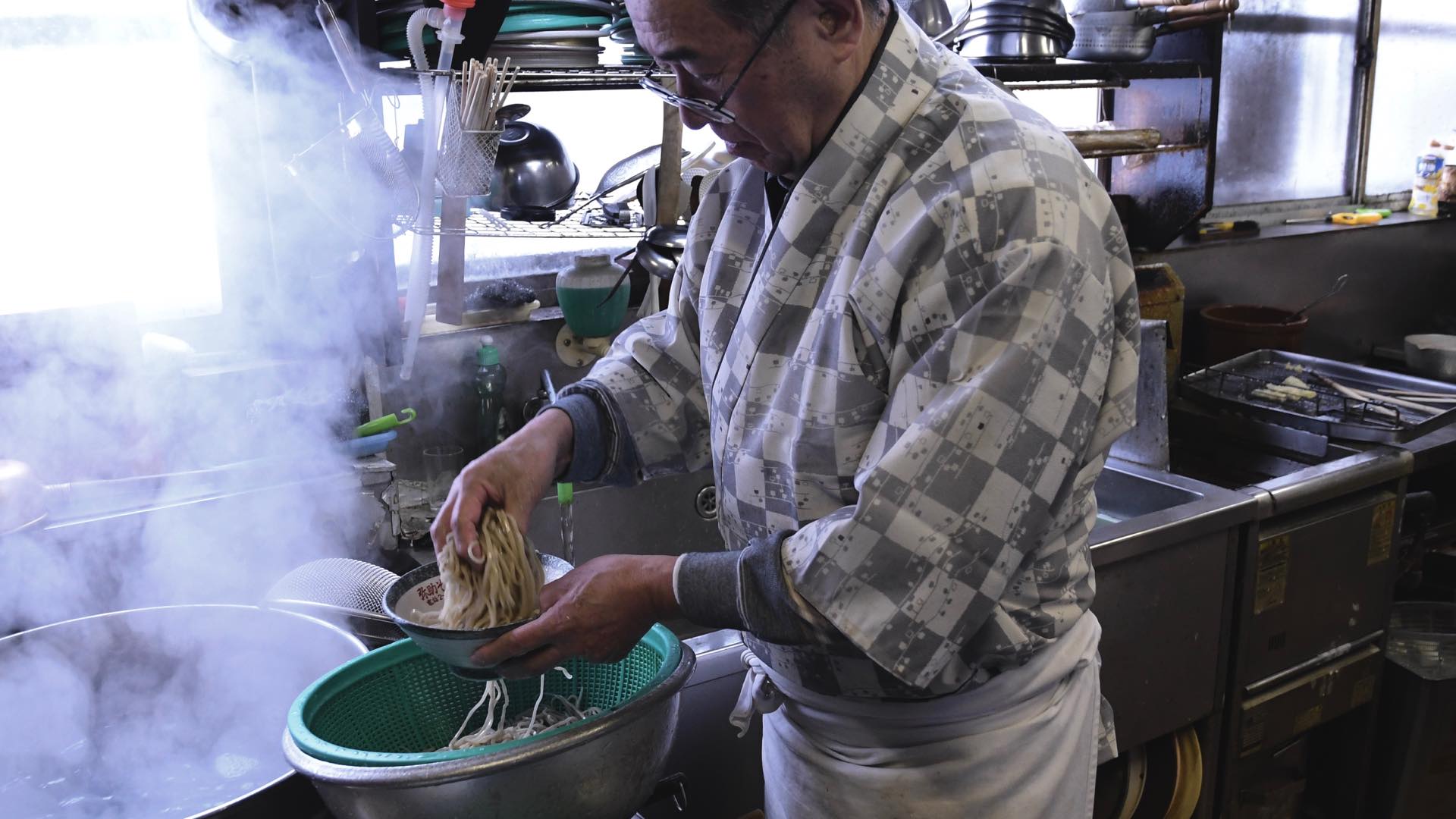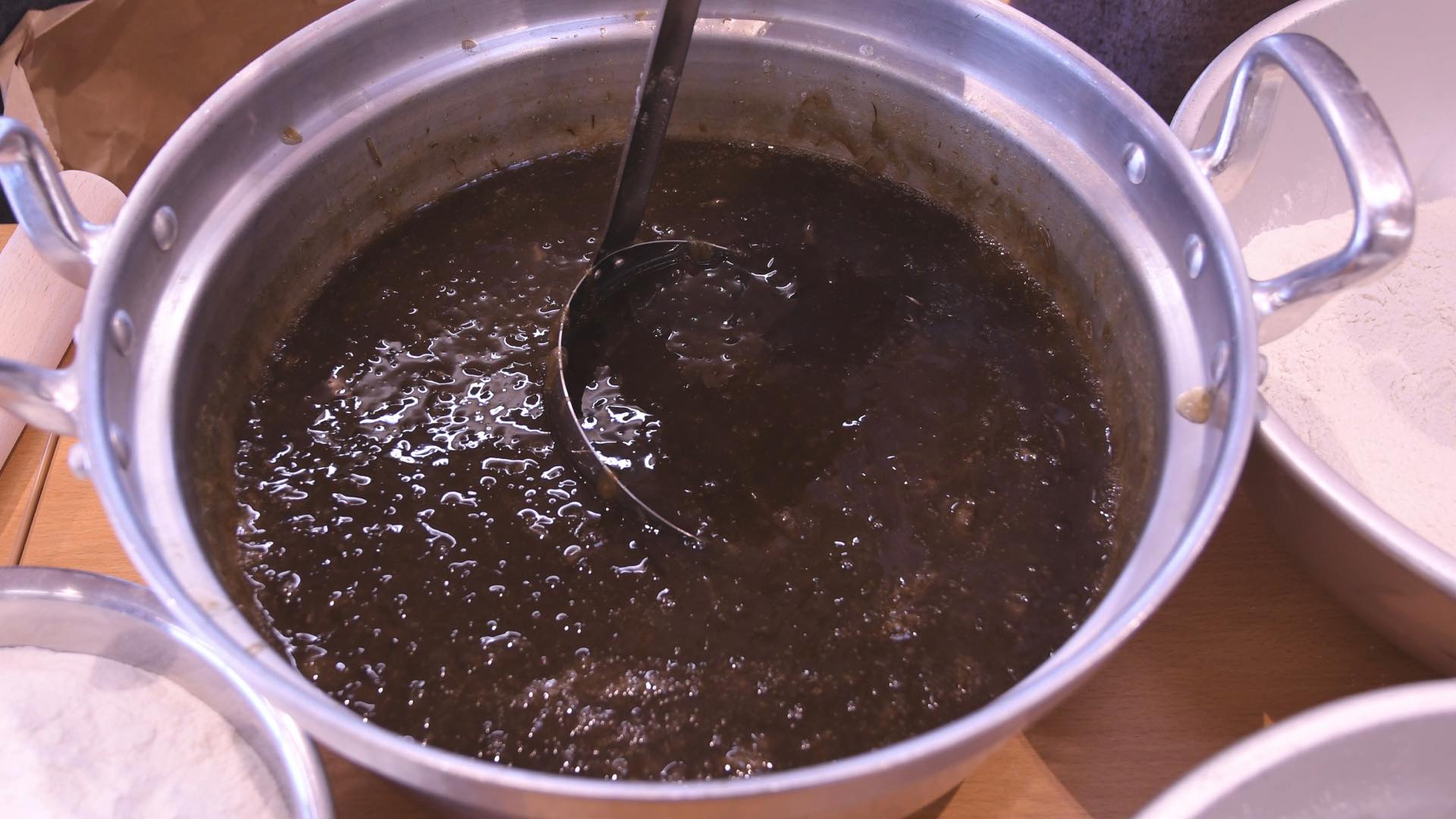What is Japanese “Soba”?
There are many different types of noodles in Japanese cuisine. Needless to say, Ramen, Udon and Yakisoba (fried noodles) as you might know, are widely known. However, among many types of noodles, one which is rarely known is “Soba”. Soba is a type of grain that started to be grown in Japan before the beginning of Nara period in the 8th century. At the beginning, Soba was often fried or made into porridge, but since the beginning of Edo period in the 16th century, the consumption of Soba as noodles spread rapidly. There are many ways to enjoy Soba; served on a bamboo sieve or dipped in a warm soup. The toppings of Soba takes many different forms- sometimes deep-fried, and other times sliced into thin pieces, deep-fried and sweetened. Surprisingly, the taste of Soba and how it is served is different in each restaurant.
Internship in UGO ABROAD
In UGO ABROAD, students will learn how to make Nishimonai Soba, which is uniquely made in Ugo Town. Nishimonai Soba is a type of Soba developed by a man called Yasuke, who was born in a local farming household in Ugo town and learned Soba making in a long-established restaurant in Osaka. Nishimonai Soba is characterized by the use of funori (polysaccharide mucilage made from seaweed) as a binding element and the cold soup that comes together. If dipped in a warm soup, the noodle gets soggy and the unique texture is spoiled, and so in Ugo Town, the noodle is served with cold soup even in winter. The master in UGO ABROAD is the sixth generation owner of the restaurant “Yasuke Soba” where Nishimonai Soba originated. Students will learn genuine soba making from the scratch.
-
How to cook
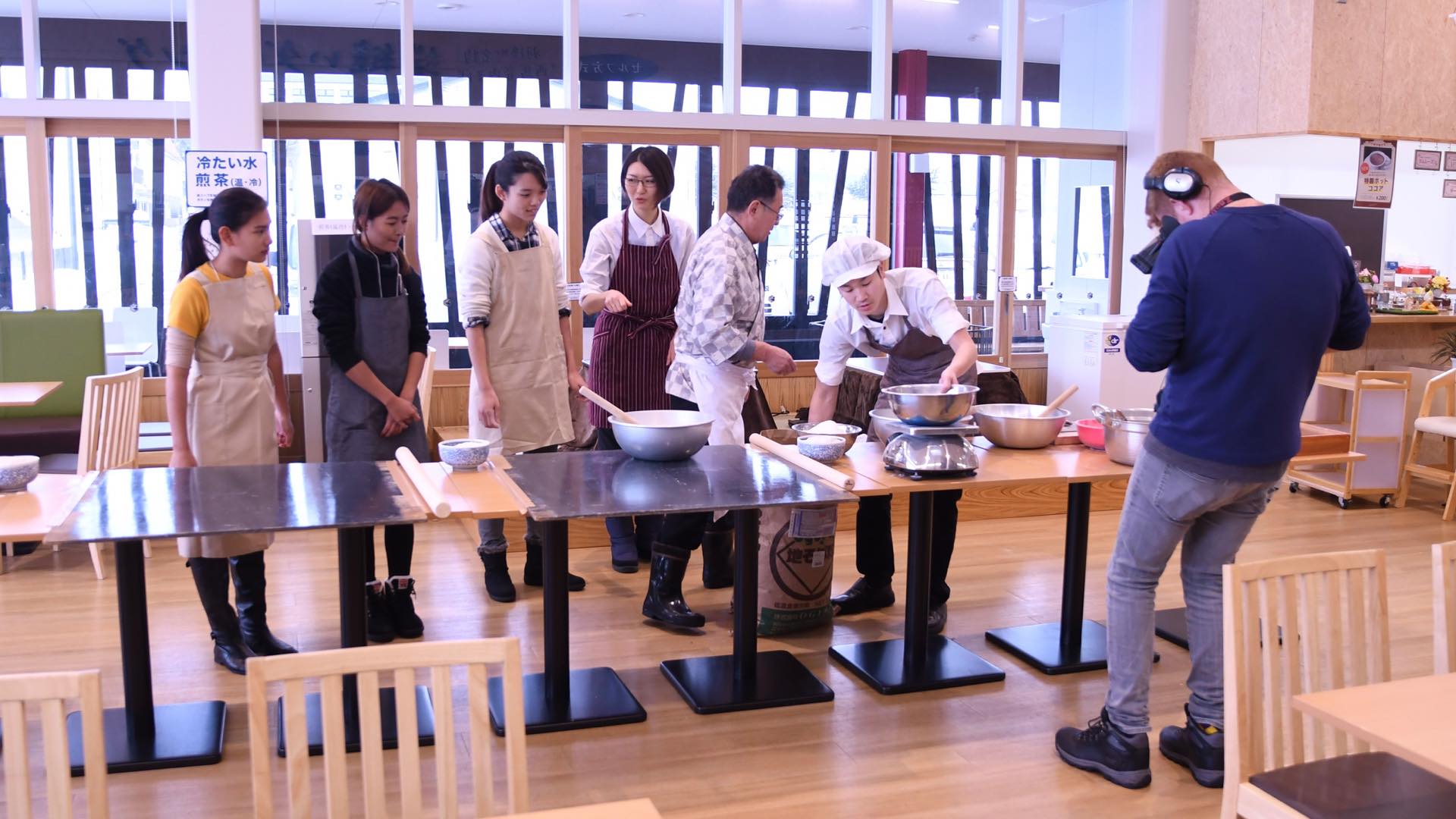
The first step would be to mix the soba powder with funori. The gist for making soba noodle is to mix the two ingredients little by little, not all at once.
-
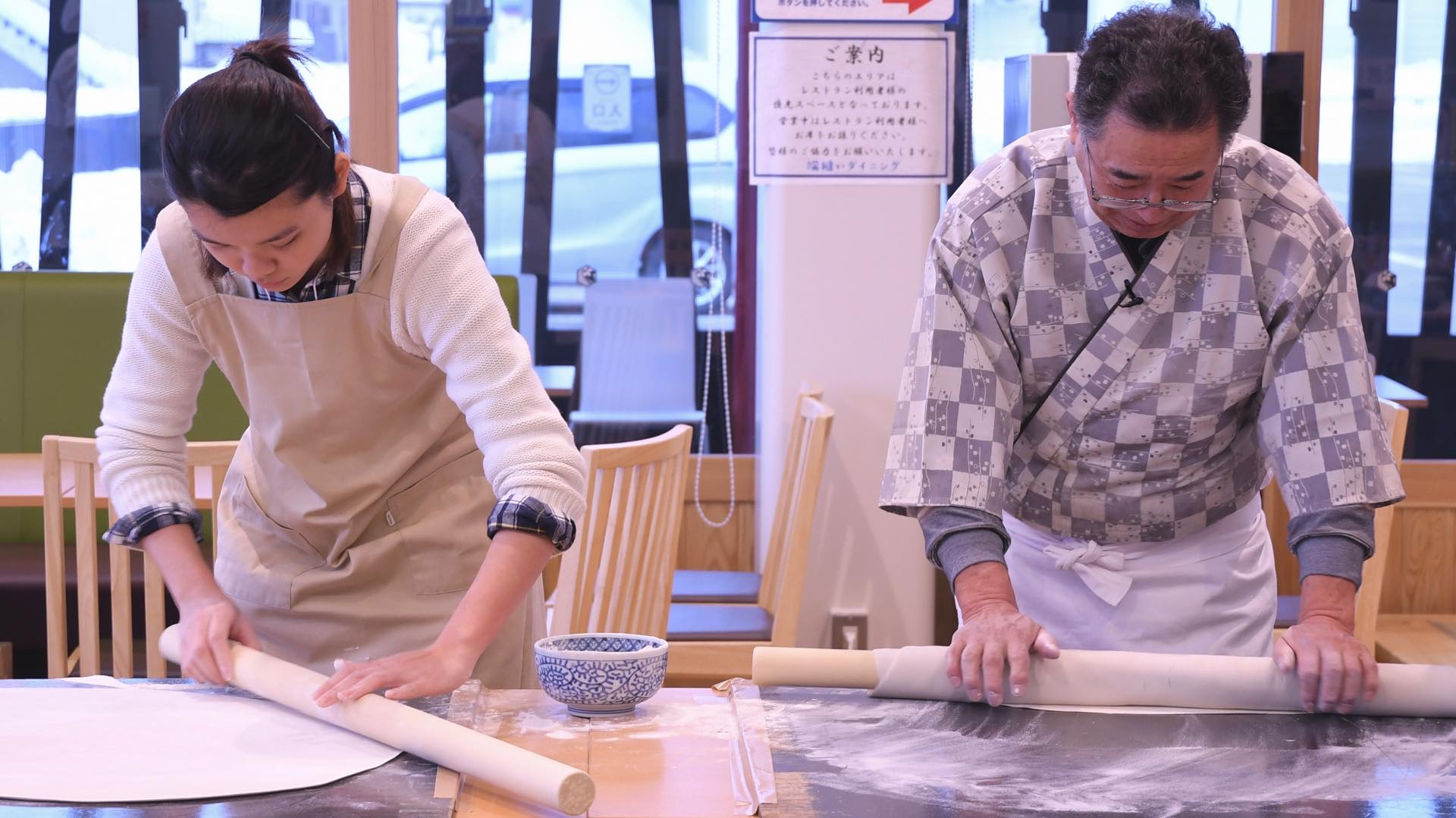
Next, by using the wooden bar, the dough will be spread into a round shape. Although it seems to be easy at a first glance, it is actually very difficult to make the big chunk of dough into circular shape.
-
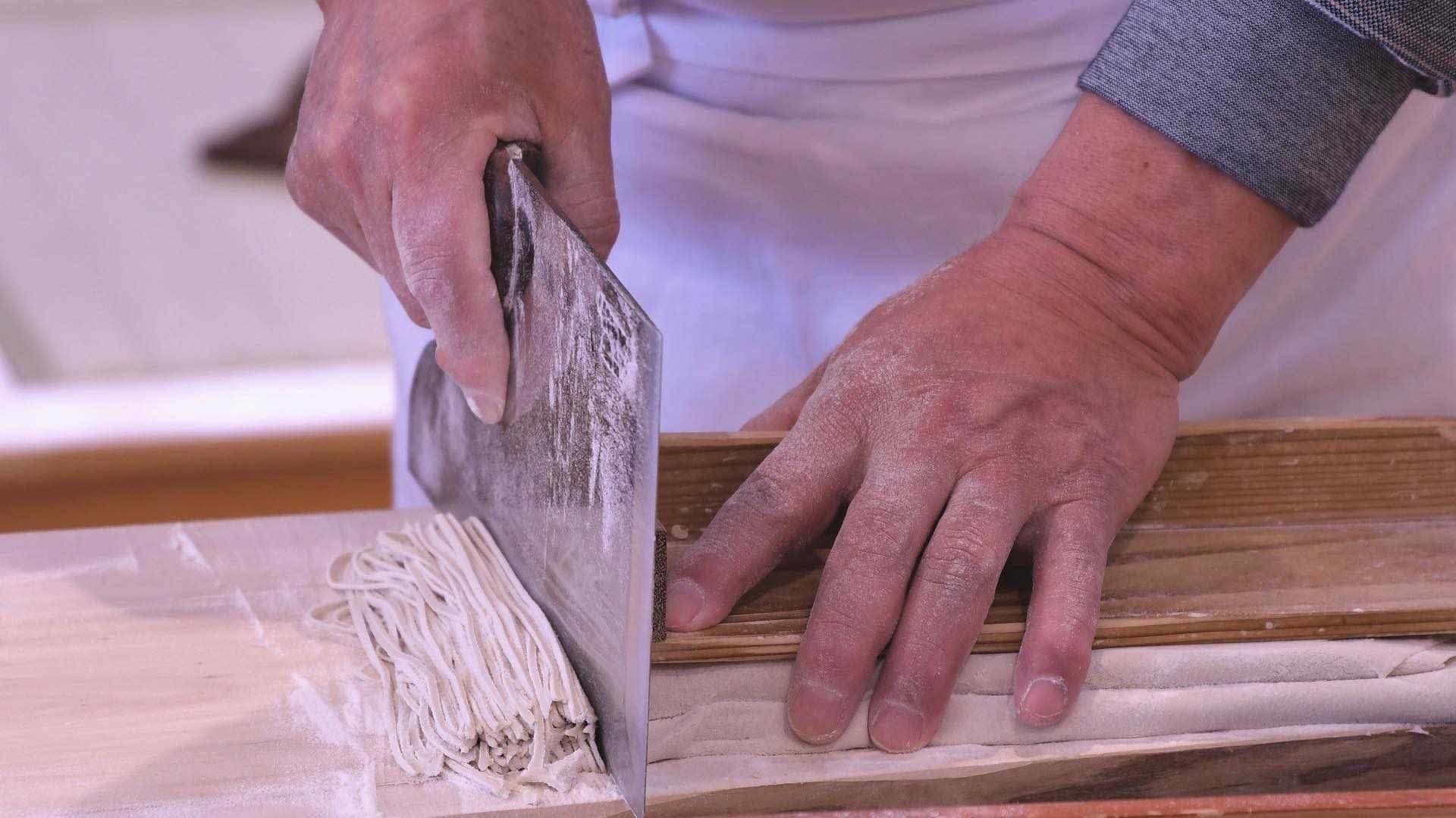
After spreading the dough nicely, the next step is to fold and cut into small pieces. The big knife to be used is specially made for cutting the soba noodles. Again, it is important to cut the dough into thin noodles evenly so that the noodles would be evenly cooked when they are boiled in the hot water.
-
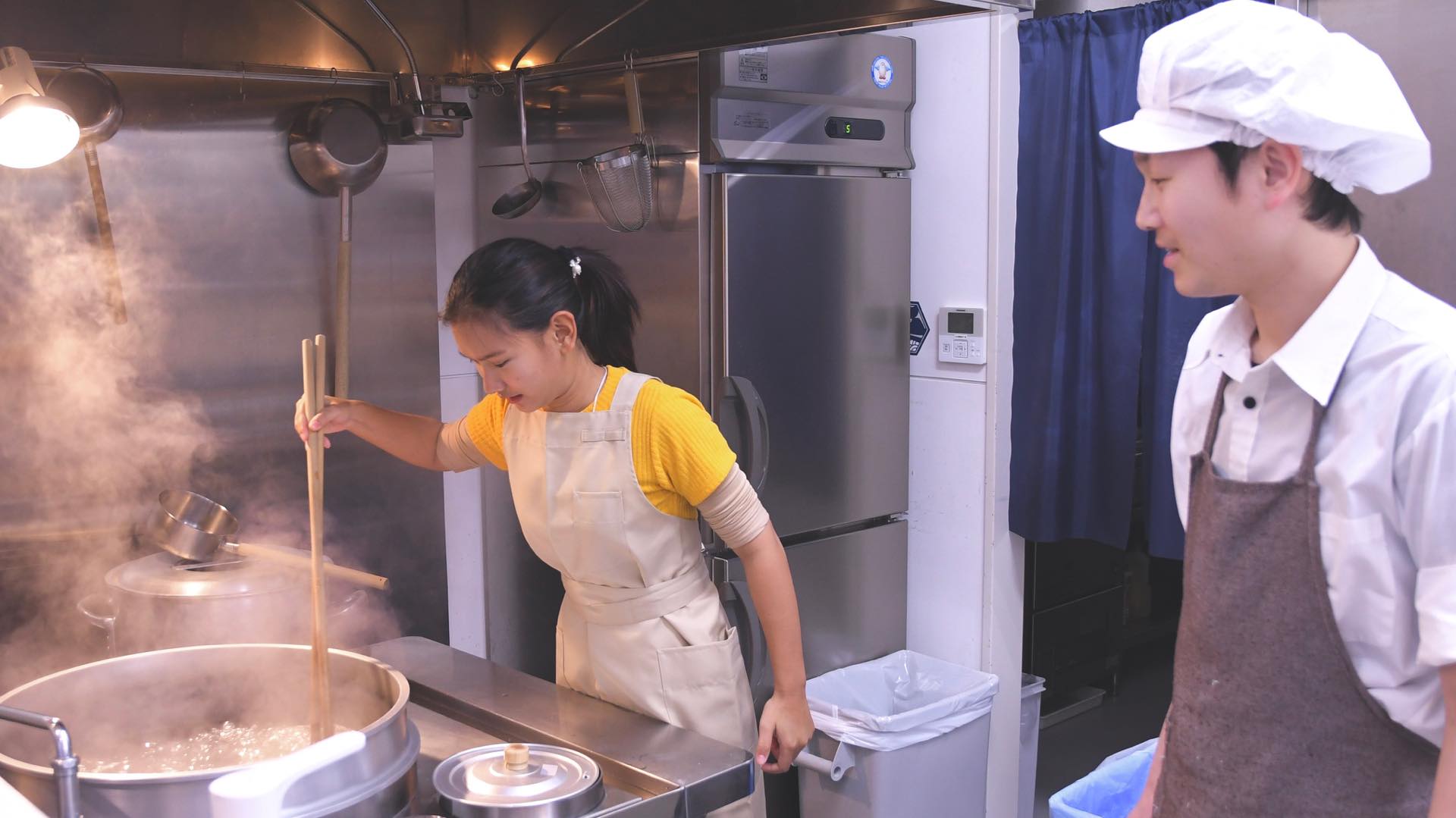
Finally, it is the time to boil the noodles. Using a big pot, the noodles will be parboiled in water at once. Unlike other types of noodles, Soba noodle is very sensitive. Therefore, noodles have to be mixed gently and parboiled quickly.
-
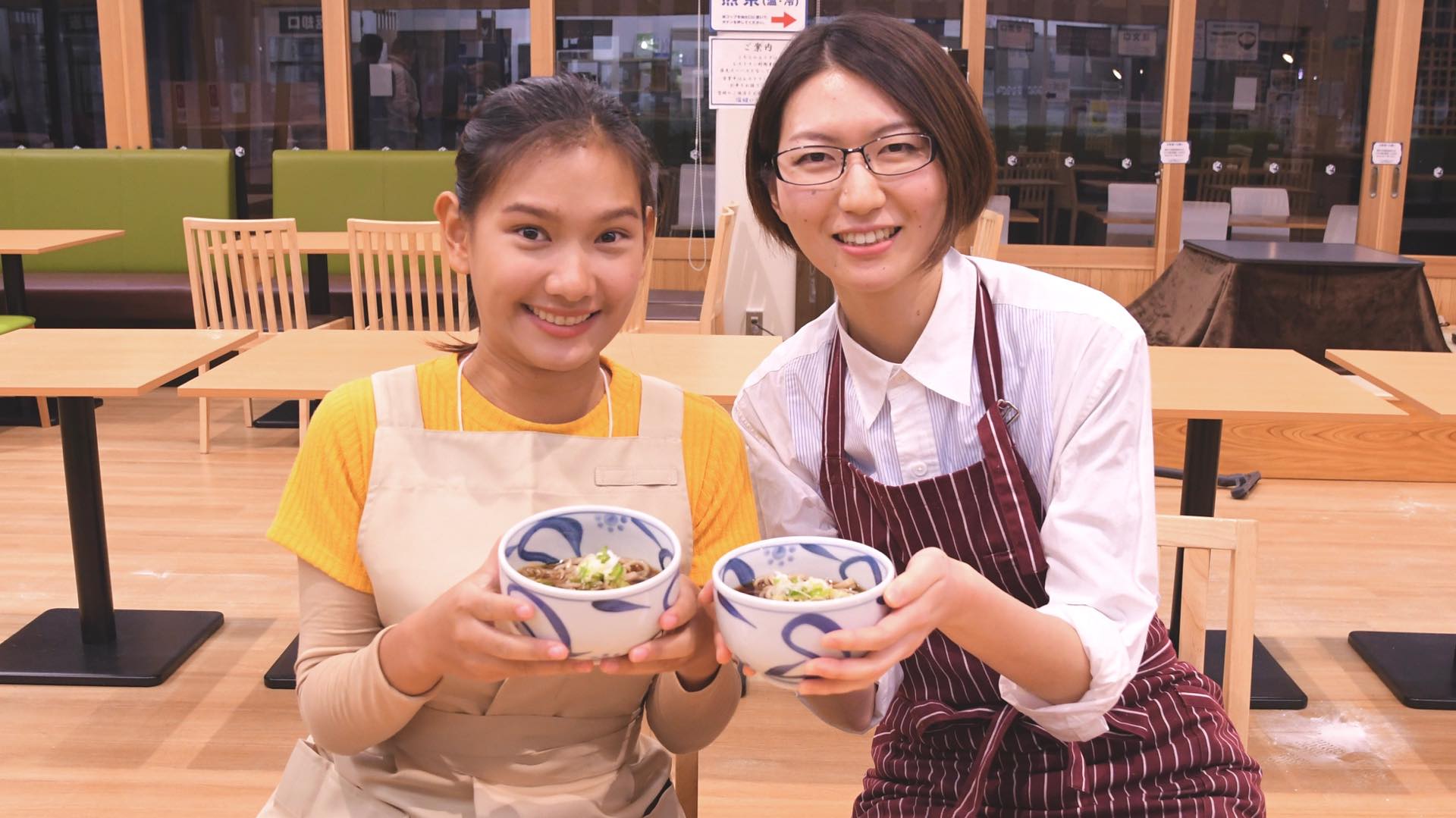
After being parboiled, the noodles need to be cooled in cold water immediately. If it has remaining heat, the noodles become more and more soggy. With its unique cold soup , the soba is finally ready to be served!
